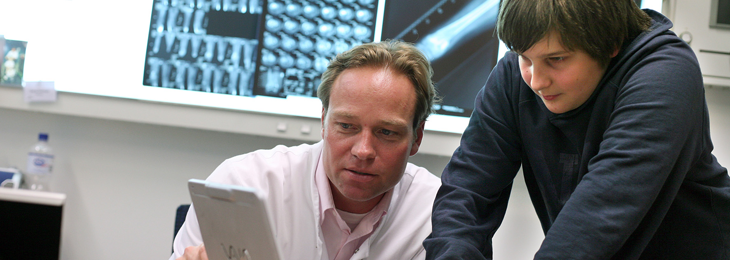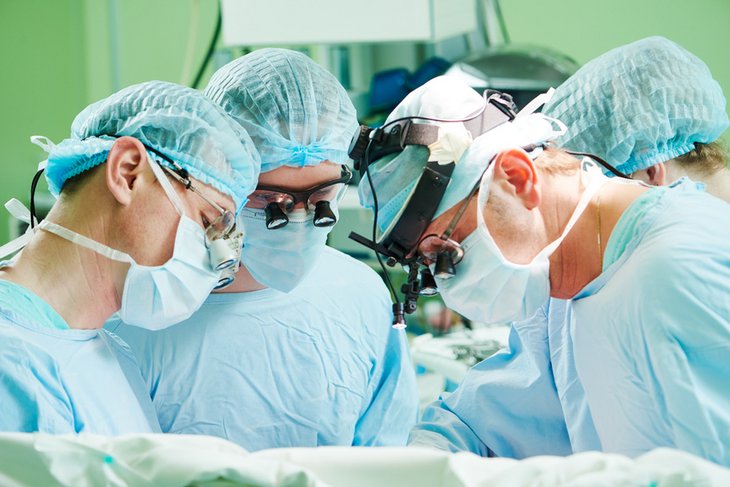Bone and soft tissue sarcomas
Contrary to the relatively common benign bone and soft tissue tumors, bone and soft tissue sarcomas are rare malignancies. The most common primary malignant bone tumor is osteosarcoma, followed by chondrosarcoma and Ewing sarcoma, while the most common soft tissue sarcoma is undifferentiated sarcoma, followed by liposarcoma and leiomyosarcoma.
Most of these tumors are localized in the extremities and the pelvis. The local treatment of choice is surgical excision of the entire tumor surrounded by a layer of healthy tissue, which is considered to be a prerequisite for long-term survival. In specialized centers this can be achieved in the vast majority of patients by limb-salvage surgery – meaning that the tumor can be adequately excised without compromising the function of the affected extremity.
Following the excision of sarcomas involving the bone, it is usually necessary to reconstruct the resulting defect. The most common form of reconstruction is endoprosthetic replacement, which involves implanting specialized metallic megaprostheses. The choice of the optimal implant and the of the optimal reconstruction method depends on several factors, such as tumor site and extension, as well as patient age, activity level and expected prognosis. For that reason the treating surgeon should be proficient in several different reconstruction options.
Apart from surgical treatment itself, many patients with bone and soft tissue sarcomas require a pre- or postoperative chemotherapy and/or radiation treatment. An extensive experience in the interdisciplinary treatment of sarcomas is necessary to decide which treatment is best suited to each patient.
The Department of General Orthopedics and Tumor Orthopedics in Münster University Hospital is one of the worldwide largest and most renowned centers for the treatment of chondrosarcoma patients. The Department Chair, Prof. Dr. Georg Gosheger, is a highly distinguished orthopaedic oncologist, who currently serves as president of the European Musculo-Skeletal Oncology Society and board member of the International Society of Limb Salvage. One of his most significant achievements is the development of a silver coating for megaprostheses, which has resulted in a significant decrease of the risk of postoperative infection.
One of the first orthopedic oncologists to recognize the influence of an excellent perioperative setting on patient outcome, Prof. Gosheger has assembled a team of experienced orthopedic oncologists, specialized nurses, physical therapists, psycho-oncologists and occupational therapists to ensure the best possible care of patients on the ward. A close cooperation with the Department of Anesthesiology ensures both the best possible support during the often extensive surgical procedures, and an optimal pain management after surgical treatment.
All patients treated in the Department of General Orthopedics and Tumor Orthopedics are presented at an interdisciplinary tumor board, where specialized radiologists, pathologists, orthopedic, pediatric, medical and radiation oncologists as well as thoracic surgeons discuss patient findings and decide on the best possible treatment plan.


